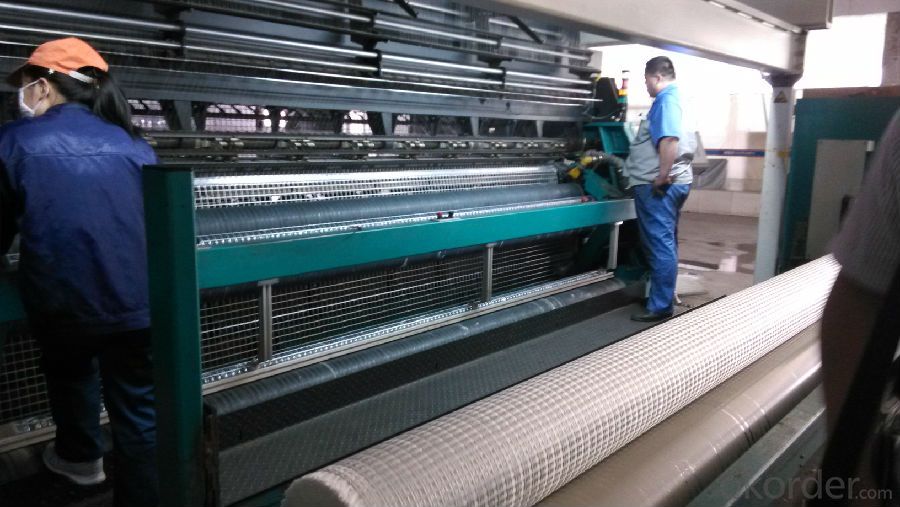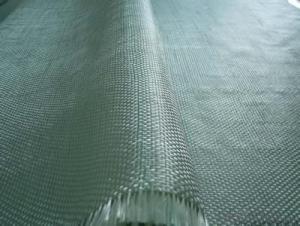Warp Knitting Fiberglass geogrid - High quality geogrid
- Loading Port:
- Qingdao
- Payment Terms:
- TT OR LC
- Min Order Qty:
- 1000 m²
- Supply Capability:
- 1000000 m²/month
OKorder Service Pledge
OKorder Financial Service
You Might Also Like
1.Brief Introduction
Warp Knitting fiberglass geogrid
The Warp Knitting Fiberglass geogrid selects the excel in synthetic fiber as a raw material,uses the warp knitting oriented structure,latitude and longitude in the fabric to the yarn between not curving condition.
2.Characteristics
Each kind of higher Uygur path,railroad’s soft roadbed enhancement isolation different base earth material.
2. The river bank,the slope of embankment strengthen stably.
3. Each kind of ground strengthens stably.
4. Strengthens the bridge connection surface.
Product Features
1. Geogrid width ranging from 1000mm to 6000mm
2. High intensity, high module, low slow change ,anti-aging , anti-embrittlement, tensile strength to be high strength.
3.Application
Product No. | Stretching ratio(%) | Grid(mm) | Width(mm) | ||
Vertical | Horizontal | ||||
PET20-20 | 13 | 20 | 20 | 12.7x12.7 25.4x25.4 | ±5 |
PET30-30 | 13 | 30 | 30 | 12.7x12.7 25.4x25.4 | ±5 |
PET40-40 | 13 | 40 | 40 | 12.7x12.7 25.4x25.4 | ±5 |
PET50-50 | 13 | 50 | 50 | 12.7x12.7 25.4x25.4 | ±5 |
PET80-80 | 13 | 80 | 80 | 12.7x12.7 25.4x25.4 | ±5 |
PET100-100 | 13 | 100 | 100 | 12.7x12.7 25.4x25.4 | ±5 |
PET120-120 | 13 | 120 | 120 | 12.7x12.7 25.4x25.4 | ±5 |
5.FAQ
Note: The Warp Knitting Polyestergeogrid are available with a width range of 1000mm~6000mm.Other specifications are also available on customer request.

- Q:Can fiberglass fabric be used for insulation in petrochemical facilities?
- Indeed, insulation in petrochemical facilities can be achieved by utilizing fiberglass fabric. This material is widely embraced for its remarkable thermal properties and ability to endure high temperatures. It demonstrates resilience against the harsh conditions typically encountered in petrochemical facilities, such as intense heat, chemicals, and corrosive atmospheres. Furthermore, fiberglass fabric's lightweight nature, flexibility, and ease of installation make it a convenient choice for insulation applications. Moreover, it effectively aids in sound insulation, which is particularly advantageous in petrochemical facilities where noise reduction is of great importance. All in all, fiberglass fabric proves itself as a suitable option for insulation in petrochemical facilities due to its durability, thermal efficiency, and versatility.
- Q:Can fiberglass fabric be used for making industrial curtains?
- Industrial curtains can indeed be made using fiberglass fabric. This material is known for its strength and durability, as well as its resistance to heat, chemicals, and abrasion. It is frequently utilized in industrial settings where protection and safety are of utmost importance, such as manufacturing plants, warehouses, and construction sites. Moreover, fiberglass fabric possesses exceptional insulation properties, making it highly suitable for creating curtains that can effectively regulate temperature and minimize energy expenses. Furthermore, its lightweight and flexible nature enable effortless installation and maintenance. In summary, given its robustness, durability, and insulation capabilities, fiberglass fabric proves to be an appropriate option for producing industrial curtains.
- Q:Are fiberglass fabrics resistant to rot or decay?
- Yes, fiberglass fabrics are inherently resistant to rot or decay due to their non-organic composition and durable properties.
- Q:How do you do fiberglass fabric on latex paint?
- Latex paint made of diatom mud, made of fiber cloth, did not try
- Q:What is the chemical resistance of fiberglass fabric?
- Fiberglass fabric exhibits excellent chemical resistance due to its composition and structure. It is made of woven strands of glass fibers that are highly resistant to most chemicals, including acids, bases, solvents, and oils. This resistance is primarily attributed to the glass fibers themselves, as glass is inherently inert and does not react with most chemicals. Additionally, fiberglass fabric is often coated or treated with various substances to enhance its chemical resistance further. These coatings or treatments can provide additional protection against specific chemicals or environments, making fiberglass fabric suitable for a wide range of applications. However, it is important to note that while fiberglass fabric is generally resistant to chemicals, there may still be certain exceptions. Some highly corrosive or reactive chemicals may still attack the fabric, causing degradation or damage over time. Therefore, it is always recommended to consult the specific chemical resistance chart or manufacturer's recommendations for the particular fiberglass fabric being used to ensure its compatibility with the intended chemical environment.
- Q:Can fiberglass fabric be used for reinforcement in sports equipment?
- Yes, fiberglass fabric can be used for reinforcement in sports equipment. It is lightweight, strong, and has excellent tensile strength, making it suitable for reinforcing various parts of sports equipment such as hockey sticks, tennis rackets, and bicycle frames.
- Q:How do fiberglass fabrics perform in terms of thermal conductivity?
- Fiberglass fabrics have low thermal conductivity, meaning they are poor conductors of heat. This property allows them to insulate and retain heat effectively, making them suitable for applications where thermal insulation is required.
- Q:How is fiberglass fabric stored and handled?
- Fiberglass fabric should be stored and handled with care to maintain its quality and prevent any damage. When it comes to storage, it is recommended to keep the fabric in a cool, dry place to avoid exposure to moisture or extreme temperature fluctuations. Ideally, it should be stored in a sealed bag or container to protect it from dust, dirt, and any potential contaminants. When handling fiberglass fabric, it is important to wear protective gloves to prevent any irritation or skin reactions. Additionally, wearing safety goggles or a face shield is recommended to protect the eyes from any loose fibers. During transportation or handling, it is advisable to avoid any sharp objects or rough surfaces that can cause tears or abrasions to the fabric. Care should be taken to avoid any unnecessary bending or folding, as this can lead to permanent creases or weak spots in the material. If the fabric needs to be cut or trimmed, it is recommended to use sharp scissors or a utility knife to ensure clean and precise cuts. It is also advisable to work in a well-ventilated area or wear a dust mask to minimize the inhalation of any loose fibers. In summary, fiberglass fabric should be stored in a clean and dry environment, handled with protective gear, and protected from any potential damage during transportation or cutting. By following these guidelines, the lifespan and quality of the fiberglass fabric can be preserved.
- Q:What are the different strengths available in fiberglass fabric?
- Fiberglass fabric possesses exceptional strength and durability, rendering it a widely favored material across various industries. The strength of fiberglass fabric varies, contingent upon the type of fibers utilized and the weaving pattern employed. One notable strength of fiberglass fabric lies in its remarkable tensile strength, which alludes to its ability to endure stretching or pulling forces without succumbing to breakage. Fiberglass fabric with high tensile strength exhibits resilience against heavy loads and deformation, thus proving suitable for applications necessitating structural integrity. Another advantage of fiberglass fabric lies in its superb resistance to chemical corrosion. Fiberglass inherently boasts corrosion resistance, enabling it to endure exposure to diverse chemicals without deteriorating. This attribute renders fiberglass fabric an ideal choice for industries involved in chemical processing, oil and gas, and marine activities. Furthermore, fiberglass fabric demonstrates remarkable heat resistance, retaining its structural integrity and mechanical properties even when subjected to high temperatures. This strength renders fiberglass fabric well-suited to applications that entail exposure to extreme heat, such as insulation materials, fire-resistant barriers, and protective clothing. Moreover, fiberglass fabric exhibits commendable electrical insulation properties. It possesses a high dielectric strength, allowing it to endure high voltages without conducting electricity. This attribute makes fiberglass fabric suitable for utilization in the electrical and electronics industries, including insulating components and circuit boards. Additionally, fiberglass fabric is renowned for its lightweight yet sturdy characteristics. In comparison to materials with similar strength attributes, fiberglass fabric is relatively light in weight. This quality positions it as a preferred choice in industries where weight reduction holds significance, including the aerospace and automotive sectors. In summary, fiberglass fabric is available in various strengths to cater to the diverse needs of different industries. Its high tensile strength, resistance to chemical corrosion, heat resistance, electrical insulation properties, and lightweight nature make it an exceedingly versatile material for a wide array of applications.
- Q:How do fiberglass fabrics compare to other types of fabric in terms of strength and durability?
- Fiberglass fabrics are known for their exceptional strength and durability compared to other types of fabric. They have a high tensile strength, meaning they can withstand heavy loads without breaking or tearing. Additionally, fiberglass fabrics are highly resistant to chemicals, heat, and fire, making them suitable for various industrial applications. Moreover, they have excellent dimensional stability, ensuring minimal stretch or distortion over time. Overall, fiberglass fabrics outperform many other fabrics when it comes to strength and durability.
1. Manufacturer Overview |
|
|---|---|
| Location | |
| Year Established | |
| Annual Output Value | |
| Main Markets | |
| Company Certifications | |
2. Manufacturer Certificates |
|
|---|---|
| a) Certification Name | |
| Range | |
| Reference | |
| Validity Period | |
3. Manufacturer Capability |
|
|---|---|
| a)Trade Capacity | |
| Nearest Port | |
| Export Percentage | |
| No.of Employees in Trade Department | |
| Language Spoken: | |
| b)Factory Information | |
| Factory Size: | |
| No. of Production Lines | |
| Contract Manufacturing | |
| Product Price Range | |
Send your message to us
Warp Knitting Fiberglass geogrid - High quality geogrid
- Loading Port:
- Qingdao
- Payment Terms:
- TT OR LC
- Min Order Qty:
- 1000 m²
- Supply Capability:
- 1000000 m²/month
OKorder Service Pledge
OKorder Financial Service
Similar products
New products
Hot products
Hot Searches
Related keywords






























